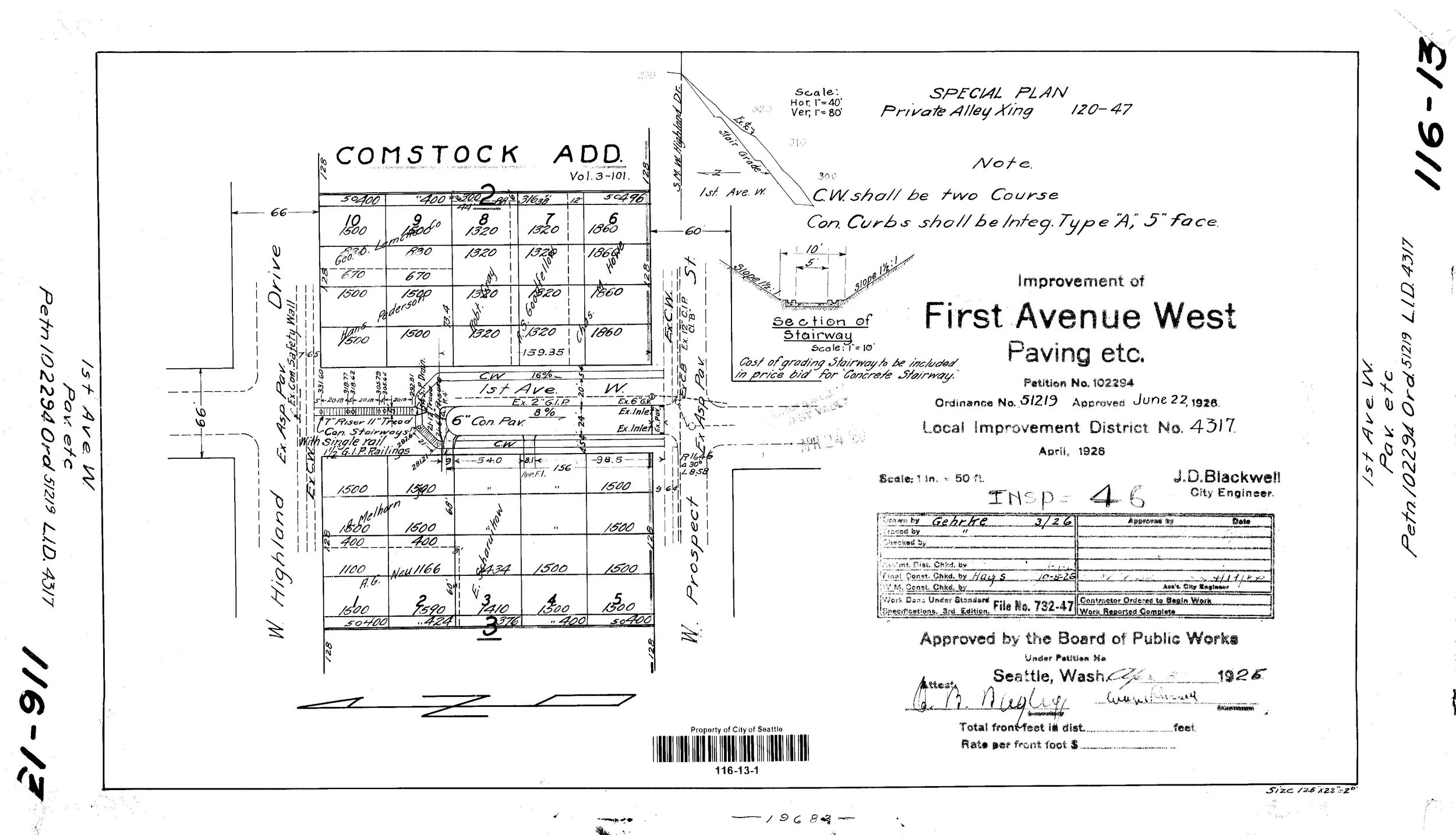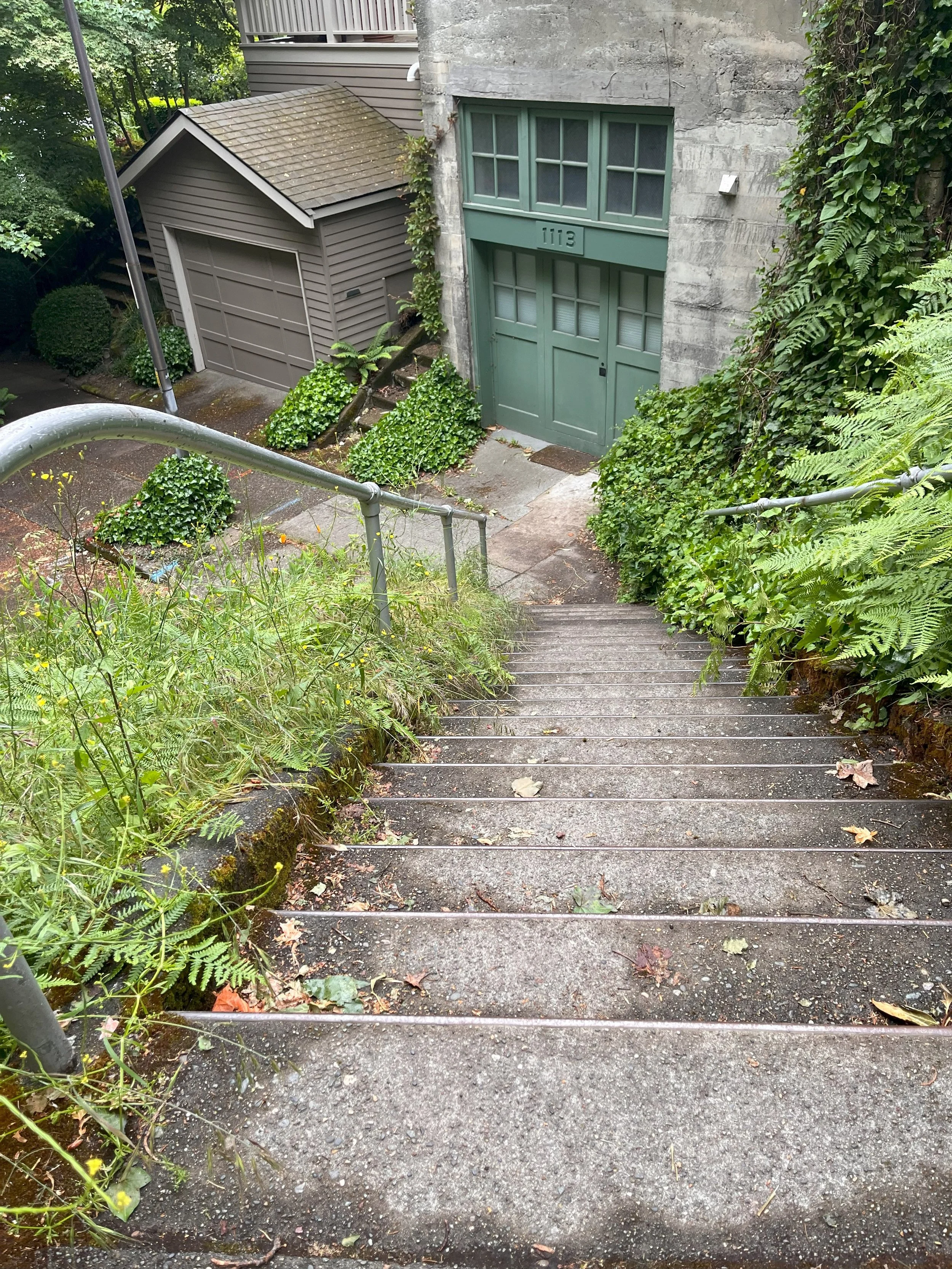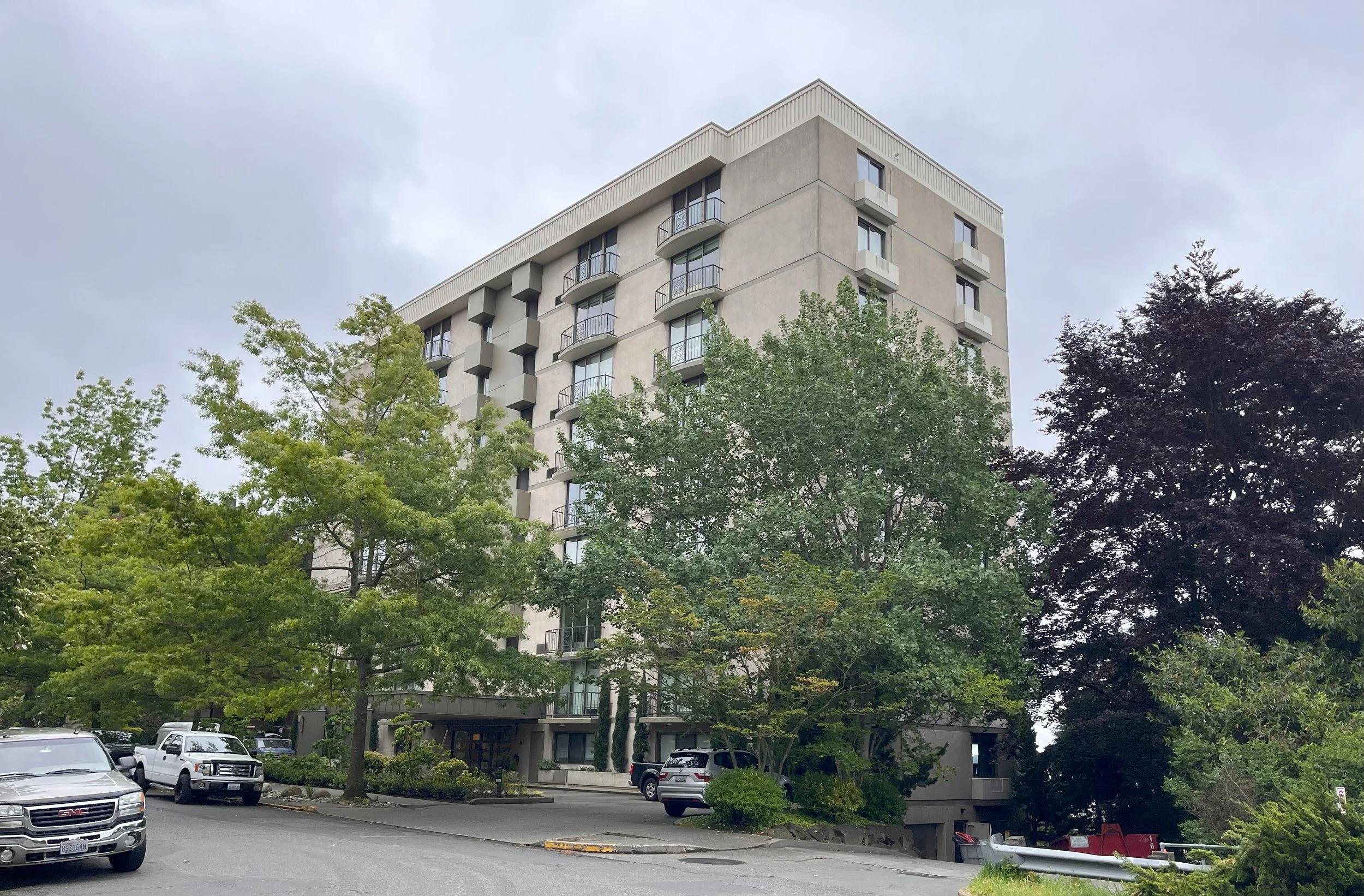My Stairs
The full flight looking south
My stairs are special not because they have a unique number (#318) and not because they were built in 1926, twenty-one years after most of the stairs along the ridge west of Queen Anne Avenue. (See below). Even if they plunge from 350 feet above sea level at Highland to 275 at Prospect and even if that precipice spurred the Kerry family to buy and donate the land for their eponymous park, that’s not why they are special.
Drawings for stairs at First Avenue West. City of Seattle. 1926
My stairs are special because they share their form with tuning forks. I love their lower ends (the tines, we should call them) that curl east and west from the handle. That part of the fork follows the line of 1st Ave W. Heading south, the eastern tine curves away from the main flight leading to an arboreal path that slopes down the hill to Prospect St. The western tine, quite exceptionally, forms an additional set of stairs. Depending on your route, Stairs #318 has either 66 steps and three landings or 87 steps and four landings. The western tine drops you at an old friend’s house, and the stairs used to belong to my pal. Recently though, we moved into the neighborhood, and my buddy had to share ownership with me.
The tine to the west with additional flight of stairs
Truth to tell, ownership is shared with everyone in Seattle, for our stairs occupy what my friend likes to call the ROW. He is a civil engineer which explains his choice of jargon. For me, this is a relatively new term. I call it the ‘right of way’ and describe it as the space occupied by roadways, sidewalks and in some places a planting strip. It means that through our agent, the Seattle Department of Transportation, you and I own about 27% of all the land in our fair city. In any case, the citizens of Seattle are the true owners of my stairs. To my great pleasure the roadway in this ROW has been replaced by the stairs and plummeting gardens which protect my view of Elliott Bay. On one side of the stairs stately trees and clinker bricks enhance the place. On the other, lavish plantings add incredible value. Although it may have originally been built with a runnel, the only wheels I’ve ever seen on the stairs were on a bicycle being carried up to Highland Drive.
One funny thing stands out about my stairs. They are the only flight of steps on the west side of Queen Anne Avenue to have been excluded from the 1979 Landmark Designation of Queen Anne Boulevard. I have no idea why they were left out. The city’s records don’t tell us why either.
As special as the design of my stairs might be, they really attracted me because they and all the streets around them are omitted from this year’s OneSeattlePlan. That plan will upzone most of Queen Anne and threaten its historic fabric. At first, I thought the city just wanted to con the relatively rich folks living on the Highland Drive ridge into supporting the plan. But that is not it. You see, while the arms of the tuning fork reach out to a verdant row of single family homes on either side of a cul de sac, the handle is flanked by multifamily apartment houses.
Those apartment buildings span the entire 20th century. The mid-century brick building on the northside of Highland Drive at Queen Anne Avenue dates from 1948. The Treat House at 1 W. Highland Drive, built by Harry Whitney Treat in 1907 and which was the largest single family home in the city at the time, sits on the southwest corner of that intersection. A later owner, George Lemcke & Company, converted the house into apartments in 1923. Gary and Carole Gaffner called the Treat House the Gables when they turned it into 15 luxury apartments in 1975. I find that amusingly ironic because there is now another place on the same street with the same name. That new building is home to a Safeway and some 300 apartments.
The Gables aka The Treat House at 1 W Highland looking southeast
West of the Treat House, the 1926 Narada Apartments abut my stairs while across the street from it stands the imposing all white Ballard Howe House from 1901. Once a single family home, it now has six units. The large condo building from 1990 on the west side of the stairs at 105 W. Highland has five very large condominiums. The block west of the stairs is also filled with multifamily buildings. The Victoria at 100 W. Highland, built in 1920, is a very big structure that once had a great view to downtown Seattle, Elliott Bay, and Mt. Rainier. The massive nine story building now facing it at 111 W. Highland appeared in 1974 and triggered the lawsuit brought by United South Slope Residents (aka USSR) which successfully challenged the city for irresponsibly and illegally issuing a permit for the slab that blocked the view.
Narada Apartments
The Victoria looking northwest
111 W. Highland Drive
While I am not a big fan of these buildings, it is clear why the city planners who wrote the OneSeattlePlan could find no reason to increase the density of our census tract. Even my flat in a 1916 building with only 13 units helps protect the historic fabric of our neighborhood. It doesn’t matter that two nearby buildings are city landmarks. It doesn’t matter that the cluster of buildings shares the vague possibility of becoming a historic district that might save them from future demolition. What matters is that the mix of multifamily buildings of different styles and materials create a unique zone whose fundamentally historic fabric will not be shredded by the OneSeattlePlan.
My special stairs and the surrounding buildings are emblematic of the complexities of urban planning in an already well defined and built out neighborhood. It is easy to see why people who love Queen Anne might object to the OneSeattlePlan and how it threatens the feel of a place they call home. It is easier to see why the City Council is now willing to accept only those portions of the plan mandated by state law and why the rest of the plan may take a long time to amend and adopt. Objecting to the OneSeattlePlan is not the point here. What is important is that it achieves its middle and low income housing goals without destroying the beating heart of our town!
For now, I am just striking my tuning fork and hoping the City Council harmonizes with its warm tones and protects our neighborhood.
Stairs #318 looking north with tines splaying








